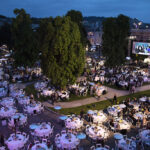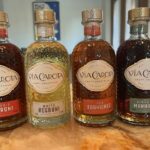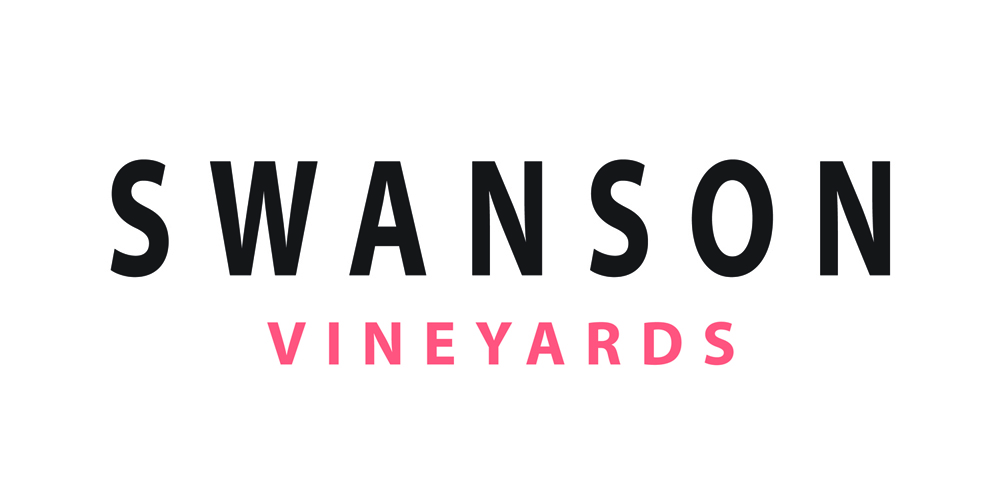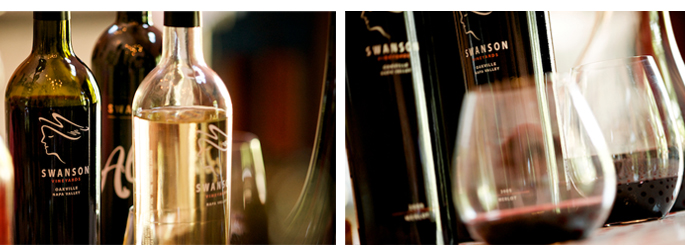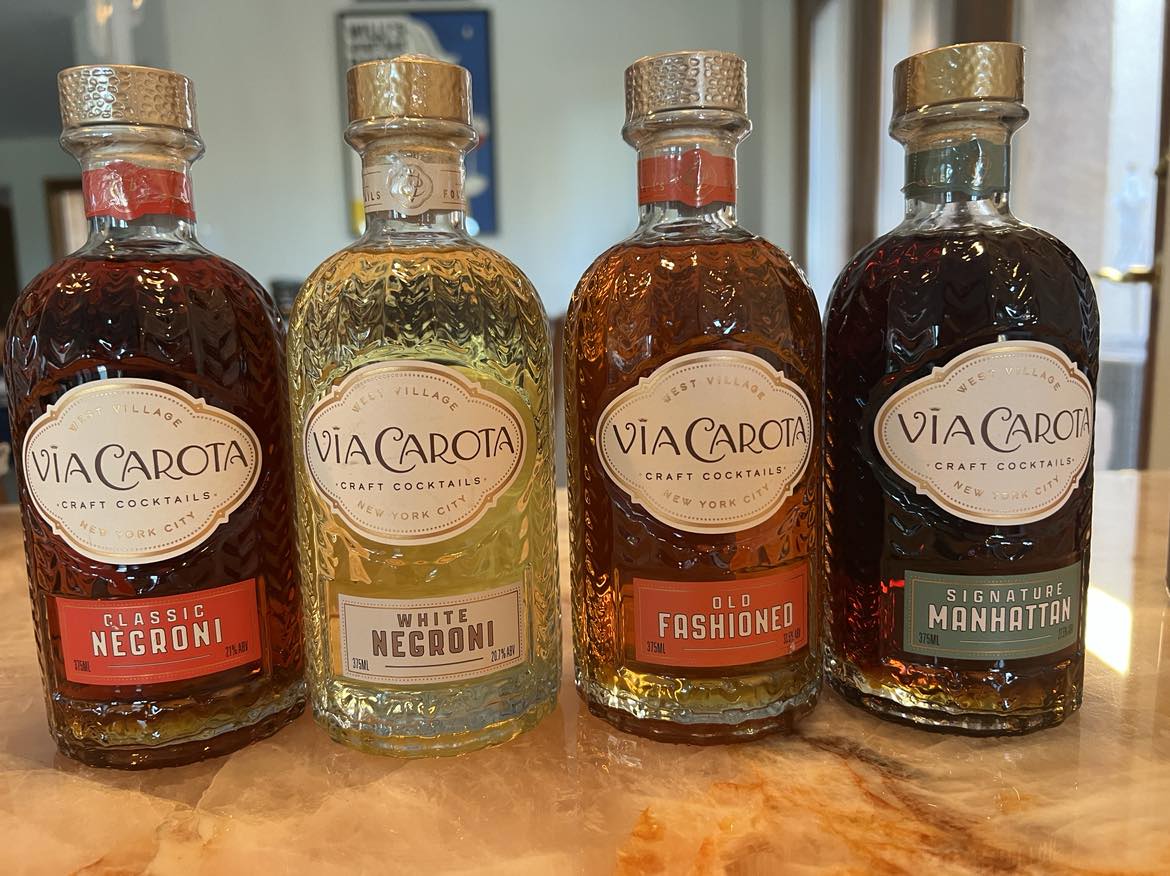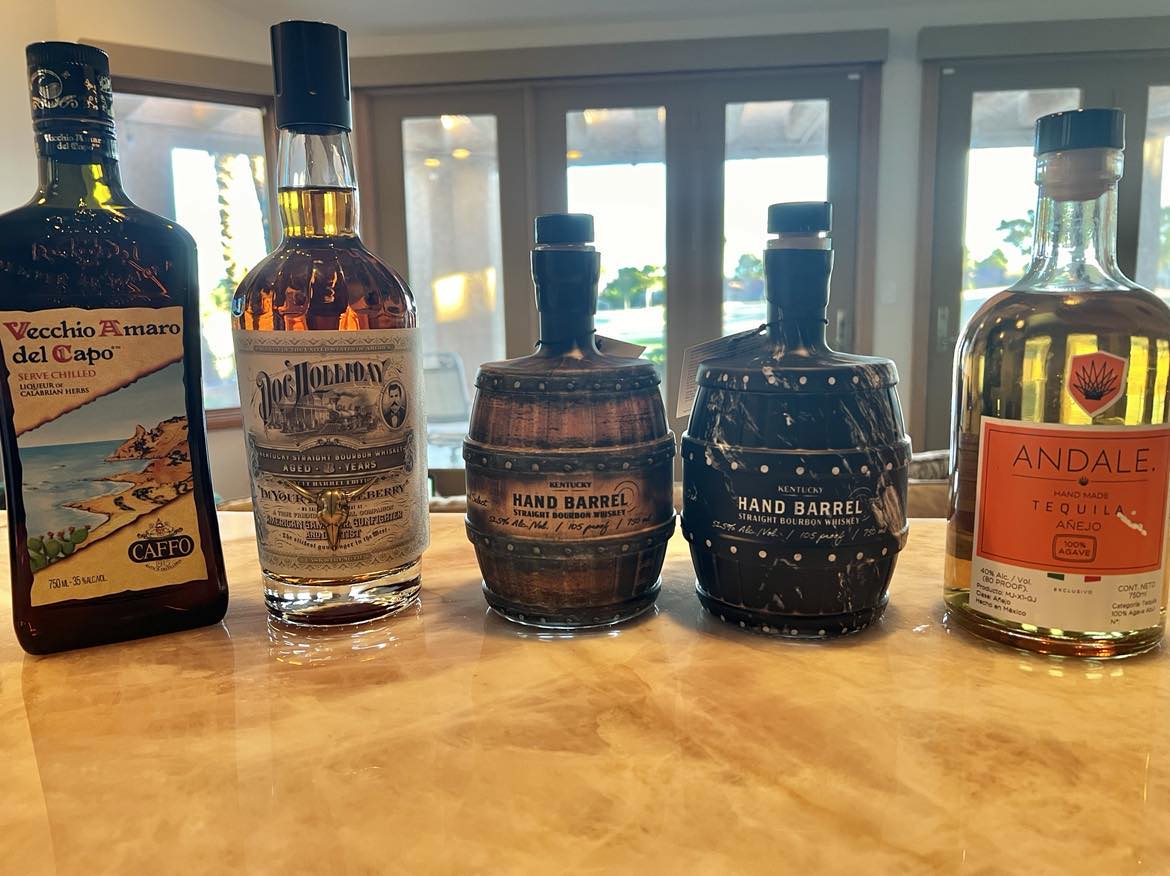Guests at Ca Del Sole restaurant passed our table and stopped to remark, “Are you having a wine tasting here? We figured with the three magnums on the table…” That what? We’d share? Oh no, I was going to take any extra wine home by employing the old trick of sticking that cork right back where it belonged, slipping it under my arm, getting it into the trunk of my car! They were Swanson magnums!
Okay, back to the dinner.
Napa winemaker, Chris Phelps, was in town for a two-day LearnAboutWine Cabernet event. But, lucky for me, Chris had a night in between the two days to share stories about himself and Swanson Vineyards. (Joining us for dinner was Sippity Sup’s Greg Henry and his friend Helen Melville.)
I had done a little homework on Chris before the evening. I knew that he had worked alongside, and was mentored by, the winemakers of Bordeaux (Christian Moueix and Jean-Claude Berrouet), and specifically, at the famed Petrus.
While on the Right Bank of Bordeaux, Chris learned that Merlot performed at its full potential only if grown under precisely the right conditions. The clay soil it thrives on at Swanson, for example, is critical: the Merlot grape likes the fact that clay meters water out slowly to the vine during the growing season. As Chris put it, “Merlot is a winemaker’s grape,” requiring less technical intervention if it is grown in the right place.
“When grown in clay Oakville soil, the wines have naturally good acidity, color and balance, exactly what we are seeking style-wise for our Oakville Merlot”, says Chris.
When Chris first arrived on the scene at Swanson the previous winemaker had been using only American Oak for Merlot. Chris shifted to half American and half French. This change, coupled with a custom, lighter toast, added more finesse and balance to the oak’s influence on the wines.
Chris is also very passionate about oak. He suggested that I visit a “cooperage” – a place where the barrels are made – to see how flavors such as vanilla, clove and spice emerge in the toasting process. (I can’t imagine pulling myself away from wine tasting the next time I’m in Napa, but he made this idea tempting.)
Swanson Vineyards
Swanson’s 90 Napa acres are attached to a true “family-owned winery,” Chris began. “An increasing number of wineries are owned by corporations.”
One of Swanson’s strengths is that it specializes in only 3 wines for the national – and international – market: Merlot, Pinot Grigio and Cabernet Sauvignon. Many wineries seem to lose their focus as they distribute a range of wines that is always expanding.
“Making white wines for the first time, I decided to make our Pinot Grigio more of an ode to Alsatian Pinot Gris,” Chris said. “We pick it early to lower the final alcohol content, aiming for about 13.5%. We then ferment the juice 100% in stainless tanks and barrels, instead of fermenting in neutral oak, which had been done in the past. We stir the wine on the lees until Christmas, and bottle in mid-February. We find that the wine retains its freshness and fruit much better with these three fundamental changes in our approach to Pinot Grigio winemaking.”
It was interesting that Chris decided to use screw caps for Pinot Grigio to avoid any cork taint at all in his wine, and to keep the wine fresh for at least 2 years in the bottle. He likes to say that, “the crisp break of the cap being opened tells me I should expect to experience a fresh, crisp wine.” I really liked that statement and thought it would read well on the bottle.
Chris also gave me a piece of information as to the cost of Napa wines. He said that the vines in many areas of Napa Valley have to be replanted every fifteen to twenty years due in large measure to leaf-roll virus. The cost for that replanting is definitely something to consider.
Alexis and Merlot
The Alexis Cabernet, a consistently highly rated wine by Wine Spectator magazine, is 90% Cabernet and 10% Merlot, with alcohol hovering around 14%, unfined and unfiltered.
We started with the 04, and I found it had pleasant black fruits in both the aroma and taste, very dry, with a lovely length. Chris obviously brought his Bordeaux style to Swanson with the 10% Merlot he blended into his Alexis Cabernet.
Next we sampled the 05 Alexis. Chris said that this one benefited from a long, cool vintage and, since 05 was a big year for quantity, they thinned more heavily. Chris found the wine “complex” and we agreed that it could compete with any outstanding Right Bank Bordeaux.
The final Alexis was an 06. I noted both anise and eucalyptus on the nose, a dry, tannic mouthfeel and asked Chris how long he would suggest we lay it down for. He thought that it could go 10-20 years, or 30 in a magnum.
The restaurant’s wine list included a 06 Merlot – that’s the one I took home – and I found it to have a lovely balance. Just like Chris.




